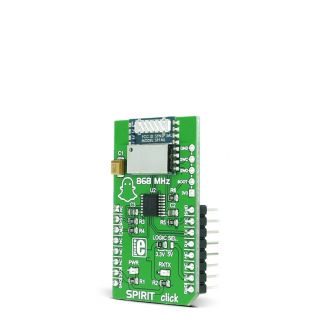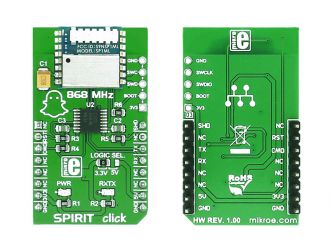
We strongly encourage users to use Package manager for sharing their code on Libstock website, because it boosts your efficiency and leaves the end user with no room for error. [more info]

Rating:
Author: MIKROE
Last Updated: 2019-03-25
Package Version: 1.0.0.1
mikroSDK Library: 1.0.0.0
Category: Sub-1 GHz Transceivers
Downloaded: 5659 times
Not followed.
License: MIT license
SPIRIT click carries the SP1ML 868MHz ultra low-power RF module. The click is designed to run on a 3.3V or 5V power supply. It communicates with the target MCU over UART interface, with additional functionality provided by the following pins on the mikroBUS line: PWM, RST, CS.
Do you want to subscribe in order to receive notifications regarding "SPIRIT click" changes.
Do you want to unsubscribe in order to stop receiving notifications regarding "SPIRIT click" changes.
Do you want to report abuse regarding "SPIRIT click".

